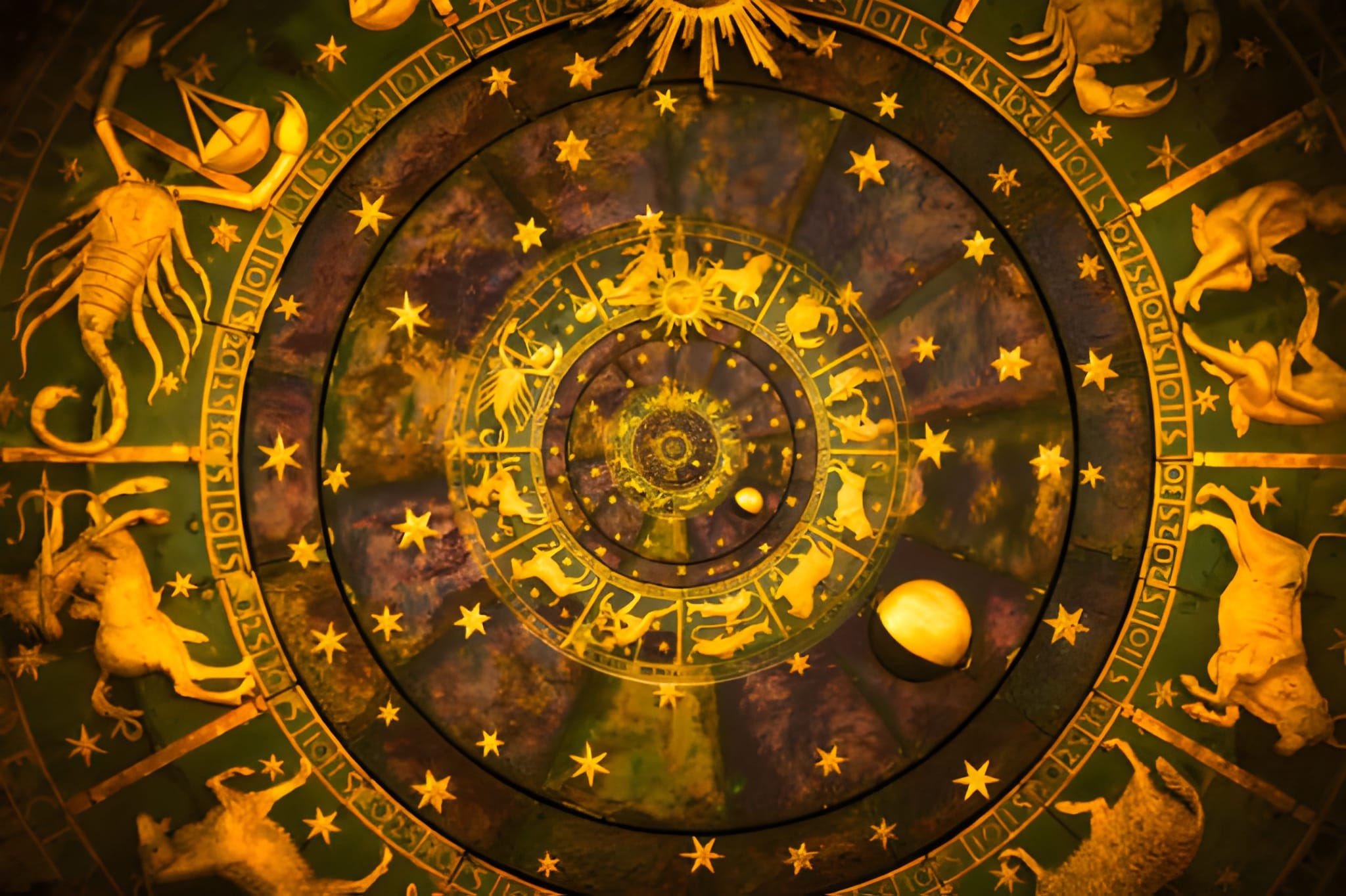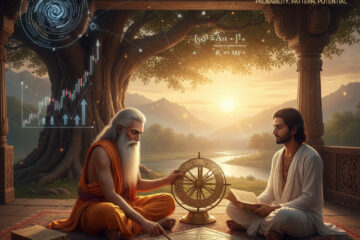“Why does my Western chart say Virgo but my Vedic chart says Leo?” — that’s the moment most people discover the whole sidereal vs tropical astrology debate. And it’s a good debate to have, because this is not a small technicality. It’s a different way of anchoring the entire zodiac.
Vedic/Jyotish uses the sidereal (nirayana) zodiac, which is fixed to the stars. Western astrology mostly uses the tropical (sayana) zodiac, which is fixed to the seasons. Both are intelligent systems. Both have history. And both can produce accurate work — as long as you stay consistent. But you can’t mix them randomly and expect clean predictions.
This article will show you, in plain language, what the real difference between sidereal and tropical zodiac is, what “precession of the equinoxes” actually means, what an ayanamsa is, why Lahiri became standard, and which settings to use in JHora if you want to stay cleanly in Vedic territory.
What Does “Sidereal vs Tropical Astrology” Actually Mean?
The entire issue comes down to one simple question: Where do we place 0° Aries? Tropical astrology says: “We’ll place 0° Aries at the spring equinox — the moment in March when day and night are equal.” Sidereal astrology says: “We’ll place 0° Aries where the actual background stars say it is.”
The Earth, however, is not a perfectly stable spinning top. It wobbles — a slow, majestic wobble called the precession of the equinoxes. Because of that wobble, the spring equinox slowly drifts away from the background stars over centuries. Tropical astrology keeps following the seasonal point; sidereal astrology keeps following the stellar point. That’s why, today, the two zodiacs differ by about 23–24 degrees.
So when people ask, “Which zodiac is correct?” the grown-up answer is: both are correct inside their own logic — but they are not the same zodiac. A tropical 15° Virgo Sun is not the same as a sidereal 15° Virgo Sun.
Precession of the Equinoxes: The Astronomical Backbone
Let’s demystify this. The Earth’s axis slowly shifts over ~26,000 years. That slow motion causes the equinox point — 0° tropical Aries — to fall earlier and earlier against the background stars. Sidereal astrology compensates for this drift using a correction called ayanamsa.
Ayan = motion; amsa = part. So ayanamsa is literally the “portion of motion” we subtract from tropical longitudes to get the sidereal position. This is why any serious conversation on sidereal vs tropical astrology has to mention ayanamsa — it’s the bridge between the two systems.
Sayana vs Nirayana: Two Ancient Names for the Same Debate
Classical Sanskrit texts call the tropical zodiac Sayana (with reference to the moving equinox) and the sidereal zodiac Nirayana (without the moving equinox). Jyotish, as practiced in India, chose the nirayana approach — the one that stays loyal to the stars.
This is not a modern, post-Greek, post-Hipparchus discovery. Indian astronomer-astrologers knew about precession and recorded it. They tied the zodiac to fixed reference stars (like Chitra/Spica) to avoid seasonal drift. That’s why modern Jyotish can still work off ancient rules — because the zodiac stayed aligned to the sky the rules were written for.
Ayanamsa in Vedic Astrology: Lahiri, Modified Lahiri, and Pushya Paksha
Once you accept “ok, we’re doing sidereal,” the next question students ask is: “Which ayanamsa should I pick?” Because different masters proposed slightly different anchor points.
- Lahiri Ayanamsa: Officially recommended by the Indian government. It fixes Spica (Chitra) to Libra 0°. This is the default for most Jyotish work and works great for natal + divisional analysis.
- Modified Lahiri: A small refinement that places Spica exactly at 0° Libra without projection. Difference is tiny (often under 1°) but some astrologers find it tighter for navamsa.
- Pushya Paksha (P.V.R. Narasimha Rao): Uses more 3D-astronomy-based logic, resulting in about 1–1.2° difference from Lahiri. Still valid. Good to experiment with, especially if you’re doing rectification-heavy work.
These are all working attempts to answer the same question: how do we keep the sidereal zodiac exactly tied to the stars? The differences look small on paper, but in divisional charts (D9, D10, D60) — where each degree matters — they can shift lagna or a planet’s dignity. That’s why consistency is more important than “the one true ayanamsa.”
Practical Setup: Sidereal Astrology in JHora
Since so many of you use JHora, here’s a clean, no-drama setup if you want to stay aligned with classical Jyotish:
- Ayanamsa: Lahiri (or Modified Lahiri if your teacher uses it). Don’t switch every other chart.
- Nodes: True Nodes, not Mean — they reflect the Moon’s actual oscillation better.
- Bhava Chalit: Keep lagna in the center of the 1st house to get house-based reading closer to space-reality.
That’s it. You’ve now told JHora: “I’m doing sidereal vs tropical astrology the Vedic way.”
“But My Western Chart Works — So Which One Is Right?”
This is the part most people don’t say out loud: both systems can produce good readings because both are reading the same person — just through different reference frames.
Here’s the simplest way to see it:
- Tropical zodiac (Western): tied to seasons, great for psychological profiling, life-phase themes, and modern counseling-style astrology.
- Sidereal zodiac (Vedic): tied to fixed stars, great for karma-timing, dasha-based prediction, and nakshatra-based nuance.
So if someone asks, “Can both be true?” the answer is, “Yes — like two different maps of the same city.” A subway map and a satellite map look nothing alike, but both help you move, as long as you don’t mix them mid-trip.
Why Vedic Astrology Prefers the Sidereal Zodiac
Vedic astrology was designed around nakshatras — the 27 lunar mansions — which are themselves stellar divisions. You can’t base a nakshatra-based system on a zodiac that drifts away from the stars every year. That is the single biggest reason Jyotish is so insistent on sidereal.
Also: classical yogas, rise-and-fall timing, Sade Sati measurements, and even some Jaimini rules make more sense when the zodiac stays fixed. Otherwise, in 2,000 years your yoga definitions would all be off. The sidereal vs tropical astrology debate, from the Jyotish side, is really: “We want the sky today to match the sky Parashara described.”
Important Notes
Does the ayanamsa change every day?
Yes, but slowly — about 50.3 arcseconds per year, or roughly 0.0139 arcseconds per day. It’s real, it’s measurable, and that’s why we need ayanamsa in the first place.
Will a 1° difference in ayanamsa ruin my chart?
Not in D1 for most placements. But in divisional charts (D9, D10, D60) and for lagna-sensitive analysis, yes, 1° can shift a planet to the next navamsa. That’s why you pick one ayanamsa and stick with it, especially for rectification work.
Can I read a tropical chart and then apply Vedic dashas?
That’s mixing systems. You can experiment, but Vedic dashas were built for sidereal placements + nakshatras. For reliable prediction, keep the ecosystem consistent.
Is tropical astrology “wrong” from a Vedic perspective?
No — it’s just working from a different anchor. Jyotish simply says: for a karma-and-timing system, a drifting zodiac is not ideal, so we use sidereal.
FAQ
Can both the sidereal and tropical zodiacs be valid?
Yes. Each one models a different reality: sidereal models sky-to-soul alignment; tropical models season-to-psyche alignment. They are two lenses, not two religions.
Which ayanamsa should I start with as a beginner?
Start with Lahiri — it’s the most widely used, easiest to get help with, and reliable for most natal and divisional work. Later, you can test Modified Lahiri or Pushya Paksha against known events.
Why did my Sun sign change when I switched to sidereal?
Because the sidereal zodiac is about 23–24° behind the tropical zodiac right now. If you were born early in a tropical sign, sidereal will likely push you back to the previous sign.
Is there a way to know “the one true zodiac”?
Practically, no. The test is not theology — it’s repeatability. Use the system that consistently matches real events in your practice.
Keep Learning with Much Needed Astro
If this finally untangled the whole “why does Vedic show a different sign?” question, keep going with Much Needed Astro. We stay with the real, technical Jyotish — functional benefics vs natural benefics, D1 vs D9, dashas that match life, and yes, clean sidereal settings.
If you’re serious about studying real Jyotish, stay with Much Needed Astro — no fluff, no fear-mongering, just clarity you can actually use.
“`



